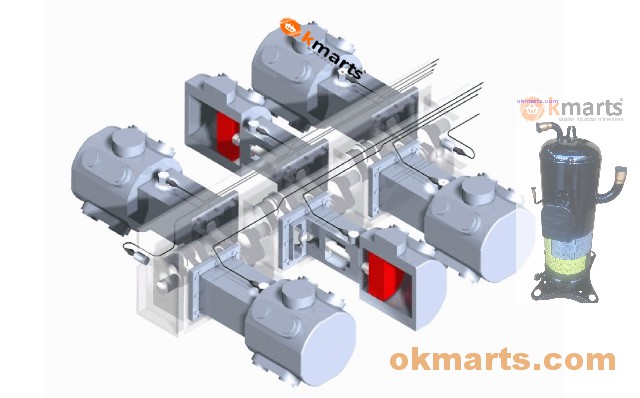Common faults and solutions of compressors A compressor is a machine that compresses gas to increase gas pressure or transport gas, and is widely used. In the mining industry, metallurgy industry, machinery manufacturing, civil engineering, petrochemical industry, refrigeration and gas separation engineering, and defense industry, compressors are one of the indispensable key equipment. In addition, the demand in the medical, textile, food, agriculture, transportation and other sectors is also increasing. Compressors are widely known as "general machinery" due to their use. The insufficient air displacement is compared with the design air volume of the compressor. Common faults and solutions of compressors

Mainly can be considered from the following aspects: 1. Malfunction of intake filter. Blockage of fouling reduces the amount of exhaust; the suction pipe is too long and the pipe diameter is too small, which increases the suction resistance and affects the amount of air. Clean the filter regularly. 2. The reduction in compressor speed reduces the discharge volume. The air compressor is improperly used, because the air compressor's discharge capacity is designed according to a certain altitude, suction temperature, and humidity. When it is used on a plateau that exceeds the above standards, the suction pressure decreases, etc. The amount must be reduced. 3. The cylinders, pistons, and piston rings are severely worn and out of tolerance, which increases the relevant clearance and leakage, which affects the exhaust volume. When it belongs to normal grinding, it is necessary to replace wearing parts such as piston rings in time. If the installation is incorrect and the gap is not suitable, it should be corrected according to the drawing. If there is no drawing, empirical data can be taken. For the gap between the piston and the cylinder along the circumference, if it is a cast iron piston, the gap value is the diameter of the cylinder 0.06/100~0.09/100; for aluminum alloy pistons, the gap is 0.12/100~0.18/100 of the gas diameter; steel pistons can take the smaller value of aluminum alloy pistons. 4. Inadequate air leakage in the stuffing box reduces the air volume. The first reason is that the packing box itself is not in compliance with the manufacturing requirements; secondly, it may be due to the poor alignment between the piston rod and the center of the packing box during installation, resulting in air leakage due to wear and strain; generally, the filling box is filled with lubricating oil , It plays the role of lubrication, sealing and cooling. 5. The influence of compressor suction and exhaust valve failure on the exhaust volume. Metal debris or other debris is dropped between the valve seat and the valve disc, which is not tightly closed, resulting in air leakage. This not only affects the exhaust volume, but also affects the change of interstage pressure and temperature; the loose contact between the valve seat and the valve disc forms a leak that affects the exhaust volume. One is manufacturing quality problems, such as warpage of the valve disc. The second is due to the serious wear of the valve seat and valve disc and the formation of air leakage. 6. The gas valve spring force is not well matched with the gas force. If the elastic force is too strong, the valve plate will open slowly, and if the elastic force is too weak, the valve plate will not close in time. These not only affect the air volume, but also affect the power increase, and the life of the valve valve and spring. At the same time, it will also affect the gas pressure and temperature changes.


